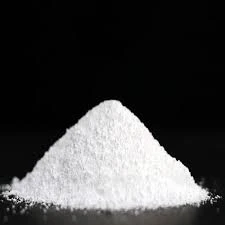Pentoxifylline An Overview of Its Uses, Benefits, and Mechanism of Action
Pentoxifylline is a pharmaceutical drug that belongs to a class of medications known as xanthines. It is primarily used to treat a variety of vascular conditions, particularly those that involve impaired blood flow. This article aims to provide a comprehensive overview of pentoxifylline, including its indications, mechanism of action, benefits, potential side effects, and considerations for use.
Indications
Pentoxifylline is often prescribed for conditions related to poor circulation. The main indications include
1. Intermittent Claudication This condition, often seen in patients with peripheral artery disease (PAD), is characterized by pain and cramping in the legs due to insufficient blood flow during physical activity. Pentoxifylline helps to improve walking distance and alleviate discomfort.
2. Diabetic Foot Ulcers Patients with diabetes are at risk for developing foot ulcers due to reduced blood flow and neuropathy. Pentoxifylline may enhance the healing of these ulcers by improving circulation.
3. Chronic Venous Insufficiency This condition occurs when the veins cannot pump enough blood back to the heart, leading to symptoms such as swelling, pain, and skin changes in the legs. Pentoxifylline may provide symptomatic relief.
4. Other Vascular Conditions In some cases, pentoxifylline is used off-label for other conditions that involve impaired blood flow, such as certain types of renal failure or Raynaud's phenomenon.
Mechanism of Action
Pentoxifylline works by inhibiting phosphodiesterase, an enzyme that breaks down cyclic adenosine monophosphate (cAMP) in the cells. By increasing the levels of cAMP, pentoxifylline enhances the flexibility of red blood cells and improves their ability to navigate through narrow blood vessels. This results in reduced blood viscosity and improved microcirculation.
Furthermore, pentoxifylline has anti-inflammatory properties that may help reduce the adverse effects of vascular conditions. By preventing the aggregation of platelets and inhibiting leukocyte adhesion, it may also contribute to improved blood flow and reduced ischemic damage in tissues.
Benefits
The benefits of pentoxifylline extend beyond mere symptom relief. Studies have shown that it can have a positive impact on overall quality of life for patients suffering from conditions associated with vascular insufficiency. For those with intermittent claudication, increased walking distance can lead to enhanced mobility and independence.
pentoxifylline medicine

In addition to its use in managing peripheral vascular diseases, pentoxifylline has shown promise in improving outcomes for patients with diabetic foot ulcers. Research indicates that when combined with standard wound care, pentoxifylline can facilitate quicker healing and reduce the risk of amputations.
Potential Side Effects
Like any medication, pentoxifylline is not without its side effects. Common side effects may include
- Nausea - Vomiting - Dizziness - Headache - Flushing
Serious side effects, although rare, can occur and may include
- Severe allergic reactions - Blood disorders (such as thrombocytopenia or leukopenia) - Heart issues (such as arrhythmias)
Due to these potential risks, it is crucial for patients to discuss their medical history and any medications they are currently taking with their healthcare provider before starting pentoxifylline.
Considerations for Use
Pentoxifylline is usually available in oral tablet form, and the typical dosage varies based on the specific condition being treated. It is important for patients to adhere to their prescribed regimen and attend regular follow-up appointments to monitor their response to the medication.
Individuals with specific preexisting conditions, such as liver or kidney disease, should use pentoxifylline cautiously and under strict medical supervision. Additionally, considering potential drug interactions, patients should inform their healthcare provider of all medications and supplements they are taking.
Conclusion
In summary, pentoxifylline is a valuable medication for the treatment of various conditions related to poor blood circulation. By improving blood flow and exhibiting anti-inflammatory effects, it can significantly enhance the quality of life for patients suffering from vascular diseases. However, like any drug, it is essential to use pentoxifylline judiciously and under the guidance of a healthcare professional to ensure safety and efficacy. With ongoing research, its applications may continue to expand, further benefitting those in need of improved vascular health.

